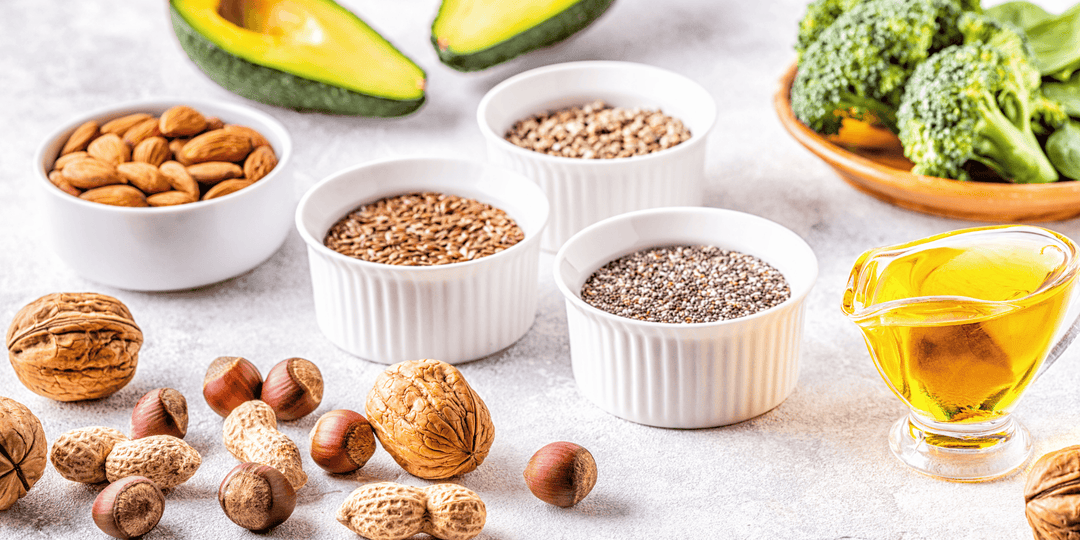Manuka honey: New Zealand’s gold

Manuka honey is a unique natural product that is valued worldwide for its special properties and origin. In this article, we answer the most important questions about Manuka honey to give you a comprehensive picture and help you make the best decision when buying and using this valuable honey.
What is Manuka honey and where does it come from?
Manuka honey is produced by bees that pollinate the flowers of the Manuka bush (Leptospermum scoparium). The Manuka bush is also known as the South Sea myrtle and grows mainly in New Zealand and parts of Australia. These plants only bloom for a few weeks a year, which makes the honey particularly rare and valuable. The Manuka plant also thrives in remote, wild areas, which makes harvesting even more difficult and underlines the special character of the honey.
What makes Manuka honey special?
All types of honey are considered antiseptic because they contain hydrogen peroxide. However, Manuka honey is characterized by another substance that is not found in any other honey: methylglyoxal (MGO). This sugar breakdown product is considered to be the key active ingredient for the special effect of Manuka honey. MGO gives Manuka honey its exceptional antibacterial properties that are not found in any other honey. This property makes Manuka honey not only a popular food, but also a valued natural remedy for various applications. Only Manuka honey with a maximum MGO content offers the potential to improve health and well-being (1,2).
What do the terms UMF and MGO mean on the Manuka honey label?
The designations UMF (Unique Manuka Factor) and MGO are quality markings that guarantee the purity and effectiveness of Manuka honey.
UMF: This certification is awarded by the Unique Manuka Factor Honey Association (UMFHA) and evaluates the antibacterial activity of the honey based on the levels of MGO, DHA (dihydroxyacetone) and leptosperin. A high UMF value (eg UMF 15+) indicates a particularly effective honey (2).
MGO: The MGO value indicates the concentration of methylglyoxal in the honey. The higher the MGO value, the stronger the antibacterial properties of the honey. For example, an MGO value of 600+ means that the honey contains at least 600 mg of methylglyoxal per kilogram (2).

How to use Manuka honey correctly – 3 ways to use it
The indigenous peoples of New Zealand, the Maori, used various parts of the Manuka bush long before the arrival of European settlers. They used the leaves, bark and seeds of the bush for various medicinal purposes. Manuka honey was traditionally used to treat wounds and skin infections because it has natural antibacterial properties (2,3). The honey was also used for gastrointestinal complaints and to strengthen the immune system. The Maori valued the Manuka bush not only for its healing properties, but also as an important resource for their holistic healthcare. This traditional use is an essential part of the cultural heritage and continues to this day. Read below to find out how you can use the properties of Manuka honey for yourself:
For health: Many people take a spoonful of Manuka honey every day to support the immune system. However, care should be taken not to heat the honey above 40°C, otherwise important ingredients are lost.
For colds: Honey is a popular and proven home remedy for respiratory infections and sore throats. Manuka honey is traditionally taken at the first signs of a cold.
For external use: Due to its antibacterial properties, it is often used to treat wounds or skin irritations. Manuka honey can be applied directly to the skin to aid healing and prevent infections (3).
When should you not take Manuka honey?
Although Manuka honey has numerous beneficial properties, there are some groups of people who should be cautious. Children under one year of age should not consume honey, including Manuka honey. People with allergies to bee products or certain plant compounds should also be cautious. Diabetics should discuss the consumption of Manuka honey with their doctor due to the high sugar content.

Manuka honey for children
What to look out for when using Manuka honey for children
Manuka honey is also a wonderful natural supplement for children, who can benefit from its beneficial properties when faced with particular challenges. Manuka honey is particularly valued by young and old during the cold season.
However, it is important to pay attention to the correct MGO (methylglyoxal) level of the honey to ensure the best possible benefits.
For children aged 1 to 10 years : At this age, a high-quality Manuka honey with an MGO value of 200 is recommended. This value is high enough and age-appropriately dosed to provide health benefits, but gentle enough to be safe and digestible for younger children.
For children aged 10 to 16 : Children aged 10 and over can benefit from a slightly higher MGO value. For this age group, Manuka honey with an MGO value of 400 is recommended.
Directions for use : It is important not to give honey, including Manuka honey, to children under one year of age due to the risk of infant botulism (4). For older children, Manuka honey can be safely consumed in small amounts, for example as a sweet addition to yogurt, tea or straight from the spoon.
By observing the correct MGO level and appropriate dosage, Manuka honey can be a valuable addition to your children's diet, supporting their health and well-being in a natural way.

Quality and storage
How to recognize real Manuka honey
Real Manuka honey should have a UMF or MGO certification on the label. These certificates ensure that the honey was produced and tested in New Zealand under strict quality controls. In addition, the honey should have a seal of origin that confirms its authenticity and quality. Consumers should be cautious of products that do not make clear statements about UMF or MGO.
How long does Manuka honey last and how should it be stored?
Manuka honey has a very long shelf life and can remain edible for several years if stored correctly. It is important to store the honey in a cool, dry place away from direct sunlight. Manuka honey should always be stored in a tightly sealed container to avoid contamination.
Why does Manuka honey crystallize and how can it be prevented?
Crystallization is a natural process that can occur in all honeys. Manuka honey also tends to crystallize due to its high sugar content. To prevent this or to dissolve the crystals again, the honey can be gently warmed by placing the jar in warm water. It is important that the temperature does not exceed 40°C so as not to destroy the valuable ingredients.
When should you not take Manuka honey?
Although Manuka honey has numerous beneficial properties, there are some groups of people who should be cautious. Children under one year of age should not consume honey, including Manuka honey, as it may contain spores of the bacteria Clostridium botulinum, which can cause botulism in infants (4). People with an allergy to bee products or certain plant compounds should also be cautious. Diabetics should discuss the consumption of Manuka honey with their doctor due to the high sugar content.
Why is Manuka honey so expensive?
Manuka honey is significantly more expensive than conventional honey due to its unique properties and limited availability. Prices can vary greatly depending on quality and MGO content. A jar of Manuka honey with a low MGO value (e.g. MGO 100+) costs less than the same amount of high-quality Manuka honey with a higher MGO value (e.g. MGO 400+ or higher). The MGO content is a decisive factor in the price, as higher MGO values mean stronger antibacterial properties and thus make the honey more valuable (2). Overall, Manuka honey is more expensive than conventional honey for several reasons:
Limited flowering period: The Manuka plant only flowers for a few weeks a year, which limits production.
Difficult harvesting conditions: Manuka plants often grow in remote and difficult to access areas. Harvesting therefore requires considerable logistical effort.
Extensive quality testing: The honey must undergo rigorous testing to obtain UMF and MGO certifications, which incurs additional costs.
High demand: Due to its unique properties and associated health benefits, demand for Manuka honey is high worldwide, which further drives up the price.
Conclusion: Manuka honey – versatile natural product with exceptional properties
Manuka honey is much more than just a sweet treat. Its unique properties and the complex production process make it a valuable natural product that is used in the kitchen as well as in natural medicine and cosmetics. When buying Manuka honey, it is important to look for the right certifications to ensure that you are getting a high-quality product. Despite its higher price, Manuka honey offers numerous advantages that make it a worthwhile investment. With its long shelf life and wide range of uses, Manuka honey is a real treasure of nature that no household should be without.
By combining tradition and science, Manuka honey remains a fascinating and valuable resource that nature offers us. Whether to support well-being, as a culinary delicacy or as an ingredient in skin care - Manuka honey impresses with its versatility and special quality.
Sources
- Carter, DA, Blair, SE, Cokcetin, NN, Bouzo, D., Brooks, P., Schothauer, R., & Harry, EJ (2016). Therapeutic Manuka Honey: No Longer So Alternative. Frontiers in microbiology, 7, 569. https://doi.org/10.3389/fmicb.2016.00569
- Johnston, M., McBride, M., Dahiya, D., Owusu-Apenten, R., & Nigam, P.S. (2018). Antibacterial activity of Manuka honey and its components: An overview. AIMS microbiology, 4(4), 655–664. https://doi.org/10.3934/microbiol.2018.4.655
- White R (2016). Manuka honey in wound management: greater than the sum of its parts?. Journal of wound care, 25(9), 539-543. https://doi.org/10.12968/jowc.2016.25.9.539
- Godart, V., Dan, B., Mascart, G., Fikri, Y., Dierick, K., & Lepage, P. (2014). Botulisme infantile après exposure à du miel [Infant botulism after honey exposure]. Archives de pediatrie: organe officiel de la Societe francaise de pediatrie, 21(6), 628–631. https://doi.org/10.1016/j.arcped.2014.03.009





